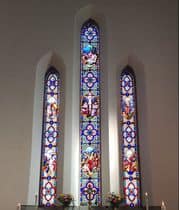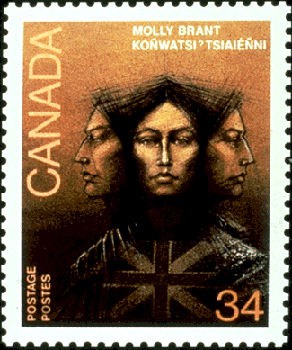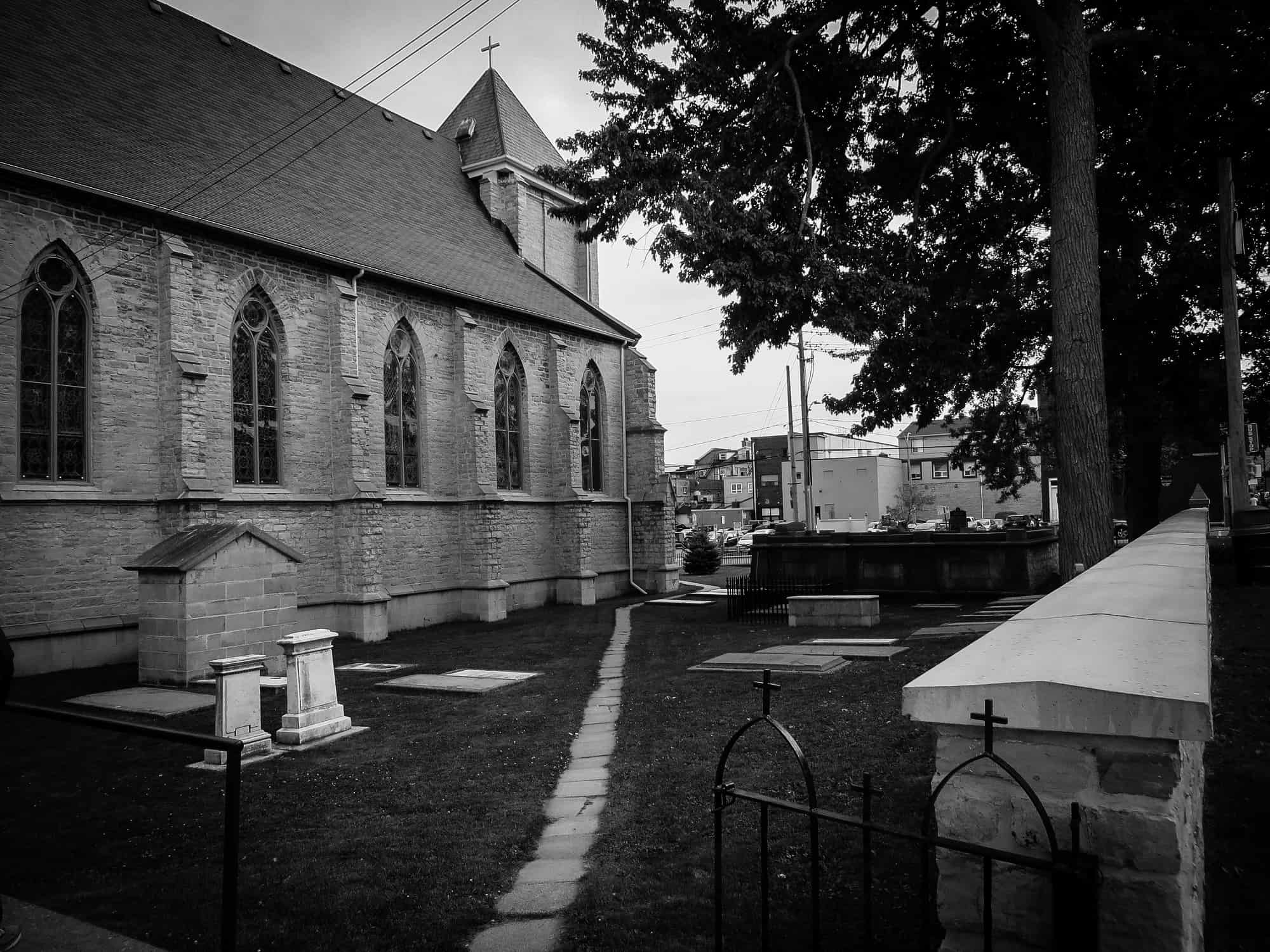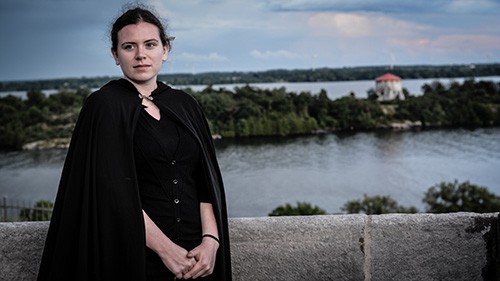Set near the corner of Queen and Montreal Street in Kingston, Ontario, sits St. Paul’s Anglican Church. Standing atop a small plot of land, the church appears rather typical in appearance. However, St. Paul’s is more storied than it lets on: the church resides in Kingston’s Lower Burial Ground, Ontario’s oldest Anglican cemetery.
In the wake of the American Revolution, the Lower Burial Ground opened in 1783 in order to lay Loyalist soldiers to rest. Despite the initial inclination towards the Loyalists, the Lower Burial Ground became a gravesite for both prominent figures and commoners in the Kingston area. The Lower Burial Ground continued as an active burial site up until the Cataraqui Cemetery opened in 1850.
Should you pay a visit to St. Paul’s, know that you will be among some remarkable people who were commemorated and/or buried at the Lower Burial Ground.
Reverend William Greig
 While he was not buried in the Lower Burial Ground itself, Rev. William Greig has been commemorated for over a century at St. Paul’s. Coined as “rector of the church” in 1848, Rev. Greig served the church so strongly that he lived and died within its walls. On November 10th, 1854, sparks from a nearby fire at the Checkers Hotel set St. Paul’s Church ablaze. It was thought that Rev. Greig contracted an illness from this blaze in his zealous attempt to save the church from the fire, and ended up passing away in 1855. Closing temporarily to recover from the fire, the church re-opened in 1856, complete with a Sanctuary Window to commemorate Rev. Greig.
While he was not buried in the Lower Burial Ground itself, Rev. William Greig has been commemorated for over a century at St. Paul’s. Coined as “rector of the church” in 1848, Rev. Greig served the church so strongly that he lived and died within its walls. On November 10th, 1854, sparks from a nearby fire at the Checkers Hotel set St. Paul’s Church ablaze. It was thought that Rev. Greig contracted an illness from this blaze in his zealous attempt to save the church from the fire, and ended up passing away in 1855. Closing temporarily to recover from the fire, the church re-opened in 1856, complete with a Sanctuary Window to commemorate Rev. Greig.
Degonwadonti (Molly Brant)
 Mohawk matriarch Degonwadonti (English name: Molly Brant) is another notable figure buried in Kingston’s Lower Burial Ground. Degonwadonti was an essential part of the Mohawk community and held a strong political influence in both the Indigenous and Loyalist communities. During the American Revolution, Degonwadonti convinced the Iroquois people to remain loyal to the Crown and passed valuable information to the British Army, which helped protect Canada from the American rebels. While Degonwadonti’s actual gravesite is unmarked, a large plaque in her honour stands outside of St. Paul’s Anglican Church, commemorating her contributions.
Mohawk matriarch Degonwadonti (English name: Molly Brant) is another notable figure buried in Kingston’s Lower Burial Ground. Degonwadonti was an essential part of the Mohawk community and held a strong political influence in both the Indigenous and Loyalist communities. During the American Revolution, Degonwadonti convinced the Iroquois people to remain loyal to the Crown and passed valuable information to the British Army, which helped protect Canada from the American rebels. While Degonwadonti’s actual gravesite is unmarked, a large plaque in her honour stands outside of St. Paul’s Anglican Church, commemorating her contributions.
Sir Richard Bonnycastle
This name may ring a bell in the minds of those who have visited Fort Henry. As part of the Royal Engineers, Bonnycastle was integral in supervising the design of Kingston’s network of fortifications. From 1832-1837, Bonnycastle oversaw the construction of the new Fort Henry and ensured, under very short notice, that the Fort was properly garrisoned. Given the impressive nature of the Fort’s construction and defense, Bonnycastle was knighted in 1838. From 1846-1848, he was assigned to oversee the construction of the four Martello Towers of Kingston, which were built along the waterfront to strengthen the city’s defenses. Unfortunately, Bonnycastle was never able to fully oversee the towers’ construction. Likely due to overwork, Bonnycastle passed away in 1847. While his burial site is unmarked, his gravestone remains in the Lower Burial Ground.
Black Slaves
While the exact names of these slaves are unfortunately unknown, the burial register indicates that several black slaves were buried in the Lower Burial Ground. During the American Revolution, slaves were either brought to Upper Canada (now Ontario) by their Loyalist owners, or were granted freedom from the British after defecting from American owners to the Loyalist units. Come 1793, Upper Canada became an even more promising location for slaves to flee to, as it was the first British territory to develop anti-slavery legislation. In a time when America was developing laws that further condemned the freedom of slaves, many slaves fled from America to Upper Canada in the hopes of attaining their deserved freedom. Even if unmarked by gravestones, the contribution of slaves to the Loyalist troops and their determined quest for freedom deserves to be remembered by those who visit the Lower Burial Ground.
As the Lower Burial Ground is bursting with history in its tight confines, we recommend stopping by if you take a trip to Kingston. Indeed, integral slices of history can often be found in the smallest of areas.
To learn more about Kingston’s dark history, join us on a walking tour.
To learn more about the Lower Burial Ground, we recommend visiting: lowerburialground.ca.
Written by: Abbey Lee Hallett, Tour Guide, Haunted Walk of Kingston


